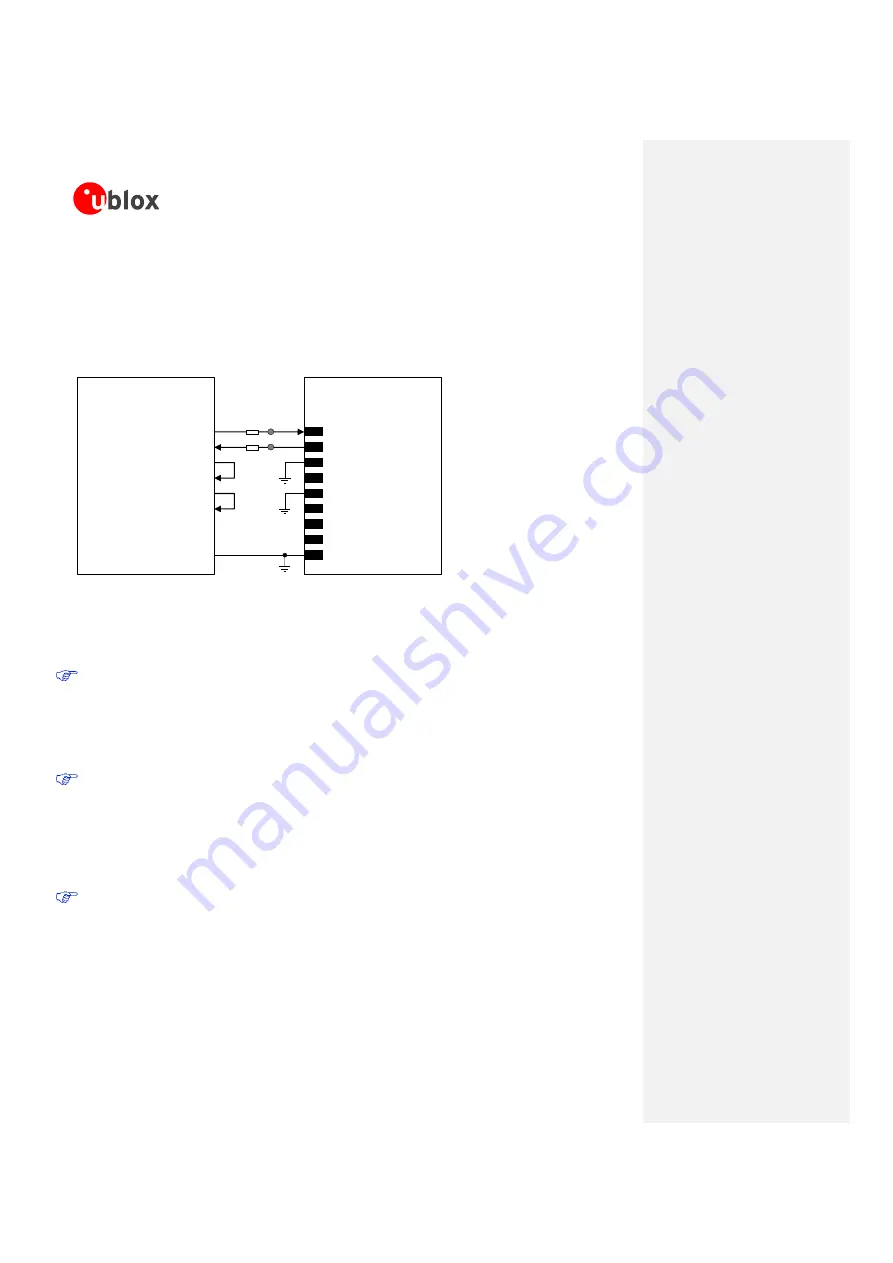
LEON-G100 / LEON-G200 - System Integration Manual
GSM.G1-HW-09002-G3
Preliminary
System description
Page 53 of 125
Providing the TxD and RxD lines only (not using the complete V24 link)
If the functionality of the
CTS
,
RTS
,
DSR
,
DCD
,
RI
and
DTR
lines is not required in the application, or the lines
are not available, the application circuit described in Figure 33 must be implemented:
Connect the module
DTR
input line to GND, since the module requires
DTR
active (low electrical level)
Connect the module
RTS
input line to GND, since the module requires
RTS
active (low electrical level)
Leave
CTS
,
DSR
,
DCD
and
RI
lines of the module unconnected and floating
LEON-G100 / LEON-G200
(DCE)
TxD
Application Processor
(DTE)
RxD
RTS
CTS
DTR
DSR
RI
DCD
GND
15
TXD
12
DTR
16
RXD
13
RTS
14
CTS
9
DSR
10
RI
11
DCD
GND
0
Ω
0
Ω
TP
TP
Figure 33: UART interface application circuit with partial V.24 link (3-wire) in the DTE/DCE serial communication
If only
TxD
and
RxD
lines are provided as described in Figure 33 and HW flow-control is disabled (AT&K0), the
power saving will be enabled by AT+UPSV=1. The module enters active-mode 20 ms after a low-to-high
transition on the
TxD
input line; the recognition of the subsequent characters is guaranteed until the module is
in active-mode.
A data delivered by the DTE can be lost using this configuration and the following settings:
o
HW flow-control enabled in the module (AT&K3, that is the default setting)
o
Module power saving enabled by AT+UPSV=1
o
HW flow-control disabled in the DTE
In this case the first character sent when the module is in idle-mode will be a wake-up character and
won’t be a valid communication character (refer to chapter 1.9.1.3 for the complete description).
If power saving is enabled the application circuit with the
TxD
and
RxD
lines only is not recommended.
During command mode the DTE must send to the module a wake-up character or a dummy “AT”
before each command line (refer to chapter 1.9.1.3 for the complete description), but during data mode
the wake-up character or the dummy “AT” would affect the data communication.
Additional considerations
To avoid an increase in module power consumption, any external signal connected to the UART must be
set low or tri-stated when the module is in power-down mode. If the external signals in the application
circuit connected to the UART cannot be set low or tri-stated, a multi channel digital switch (e.g. Texas
Instruments SN74CB3Q16244) or a single channel analog switch (e.g. Texas Instruments TS5A3159 or
Texas Instruments TS5A63157) must be inserted between the two-circuit connections and set to high
impedance when the module is in power-down mode.






























